Janithobacterium lividum strain DSM 1522 is a gram-negative bacterium that has antimicrobial and antitumor properties. It is usually found on the skin of amphibians. It’s a helpful bacterium because it protects against fungal pathogens. It was found that altering the amount of Janthinobacterium lividum produced on the skin of an amphibian allows for an increasingly higher chance of protection against chytridiomycosis, therefore allowing the survival rate to be much higher (Harris, 2009).
References:
Harris, R. N., Brucker, R. M., Walke, J. B., Becker, M. H., Schwantes, C. R., Flaherty, D. C., . . . Minbiole, KP. (2009, March 26). Skin microbes on frogs prevent morbidity and mortality caused by a lethal skin fungus. The ISME Journal 3, 818–824. Available from google scholar. Retrieved April 02, 2017, from http://www.nature.com/ismej/journal/v3/n7/abs/ismej200927a.html
Methods for isolation and identification:
- Samples were obtained from Buffalo Creek and the gravel trail leading up to the creek. Both locations were found next to the Environmental Education Center at Lancer Park in Prince Edward County. Collections of samples were made using 50ml tubes. (Figure 1.)The water sample was collected from the top of the creek water. (Figure 2.) The gravel sample was collected from the trail that was beside the creek. (Figure 3.)
- A pink colony was chosen from the GH2O 1:10 sample, and an orange colony was chosen from the H2O 100% sample. (Figure 4.)
- A PCR product was digested with MspI and sequenced to identify the genus and species of the bacteria.
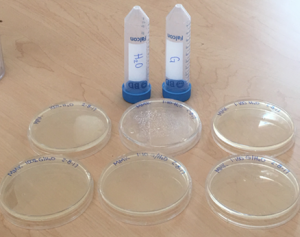
Figure 1.
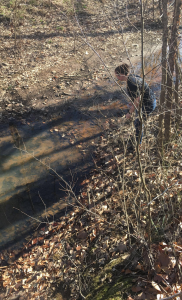
Figure 2.
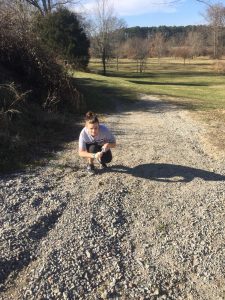
Figure 3.
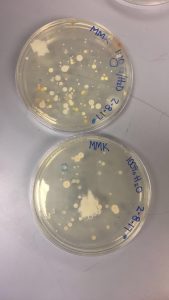
Figure 4.
Results:
- MSP1 digestion(Figure 5.) A 1,500 bp product was amplified by PCR. However, there was no sign of migration, indicating a fault in this process.
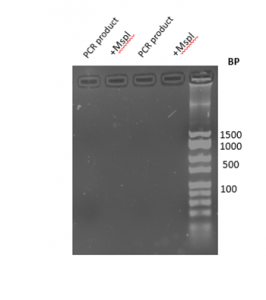
Figure 5.
- Sequence analysis (Figure 6.) The sequenced PCR product generated 429 bases of high-quality reads that were used to identify the genus and species of the colony. The chromatogram of the sequence is available as a pdf. (SKRFC_PREMIX_JF7578_46) NCBI BLAST analysis revealed 99% identity with bases 41-469 of the 16s rRNA gene of Janithobacterium lividum.
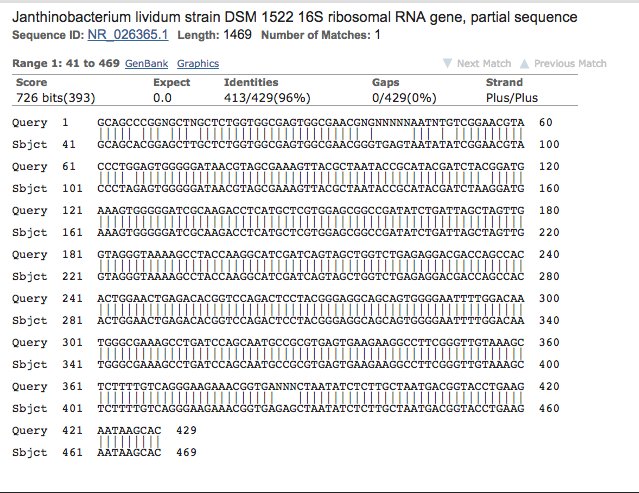
Contributed by- Mckayla Parker, Madion Rea, and Kelly Tarmon. BIOL 250 Spring 2017